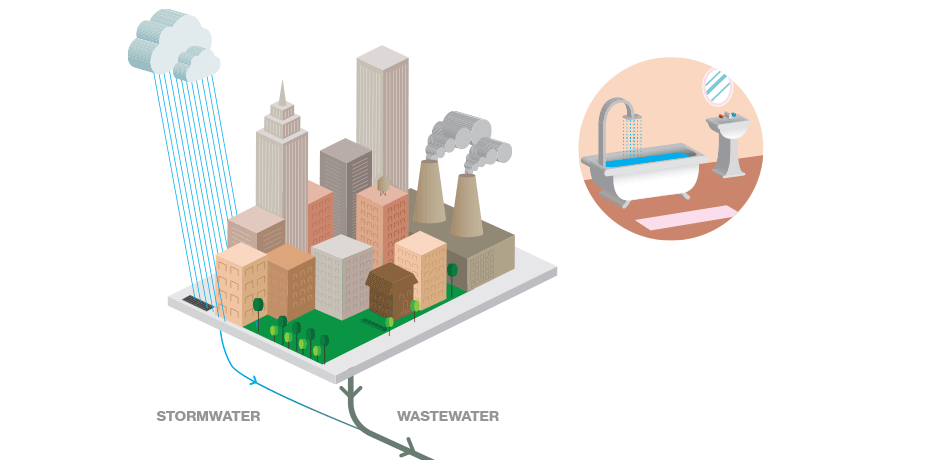Strategic Approaches to Enhance Waste Water Treatment Efficiency and Minimize Environmental Effect
In the world of drainage treatment, the mission for enhanced effectiveness and lowered ecological effect is a perpetual difficulty that demands strategic remedies. As society grapples with the essential to manage water sources sustainably, a nuanced approach comes to be crucial. The combination of innovative therapy modern technologies, energy-efficient processes, source recuperation techniques, boosted nutrient elimination techniques, and clever monitoring and control systems represents a complex structure for resolving these pressing problems. What exists at the core of this complicated internet of strategies is the possible to change the method we come close to waste water therapy, not simply as a process of disposal, but as an important chance for advancement and environmental stewardship.
Advanced Therapy Technologies
Innovative membrane purification systems have revolutionized sophisticated wastewater therapy procedures, dramatically enhancing the removal of contaminants. This innovation has actually verified to be very effective in eliminating a vast range of pollutants, consisting of pharmaceuticals, heavy steels, and organic compounds, which are frequently challenging to get rid of via conventional treatment techniques.
In addition, membrane layer filtration systems offer many benefits over traditional therapy approaches. In addition, these systems are extremely versatile and can be conveniently integrated right into existing therapy plants or utilized as standalone units for decentralized applications.
Energy-Efficient Procedures
The assimilation of energy-efficient processes in wastewater therapy systems is essential for maximizing resource application and reducing operational costs. One vital method to boosting power performance in wastewater treatment is the application of sophisticated aeration systems, such as fine bubble diffusers or surface aerators, which can improve oxygen transfer performance and decrease energy usage.
Furthermore, enhancing process control and automation through using innovative sensing units and keeping track of systems can improve overall energy effectiveness by adjusting procedures in real-time based upon real need and conditions. Executing energy audits and on a regular basis monitoring power efficiency indications are crucial methods to recognize areas for renovation and track energy-saving campaigns effectively. Generally, the adoption of energy-efficient processes in wastewater treatment not just benefits the environment but also adds to long-lasting expense financial savings and operational sustainability.
Source Healing Methods
With an emphasis on maximizing resource utilization and sustainability in wastewater treatment systems, the application of resource recovery approaches becomes a critical aspect in enhancing operational efficiency. Source recovery methods in wastewater treatment entail the identification and extraction of important resources from the waste stream, thus transforming what was as soon as taken into consideration waste into a beneficial asset. By executing resource healing techniques such as nutrient elimination and recovery, power generation from raw material, and the manufacturing of multiple-use water, wastewater treatment plants can decrease environmental effect while maximizing performance.

Improved Nutrient Removal Methods
Implementing innovative nutrient removal methods is important for enhancing the effectiveness of wastewater treatment systems. Enhanced nutrient removal plays an essential duty in decreasing the environmental impact of cured effluent discharged right into water bodies. One of the essential methods made use of for improved nutrient elimination is the process of organic nutrient why not try here removal (BNR), which includes the removal of nitrogen and phosphorus with biological processes. This can be attained through the use of specialized microbes that can convert nitrogen substances into inert nitrogen gas via denitrification, and collect phosphorus within their cells with a process called enhanced organic phosphorus removal (EBPR)

In enhancement to BNR, progressed therapy approaches such as membrane layer bioreactors (MBRs) and built wetlands can likewise be utilized to boost nutrient removal performance. By including these advanced nutrient removal strategies into wastewater treatment systems, sectors and districts can properly decrease nutrient contamination and protect the environment.
Smart Surveillance and Control Solution
Using advanced innovation, the combination of smart surveillance and control systems changes the functional efficiency of wastewater treatment centers. These systems incorporate sophisticated sensors and information analytics to constantly keep track of essential criteria such as pH degrees, turbidity, liquified oxygen, and flow rates in real-time. By accumulating and analyzing this data, drivers can gain useful understandings right into the efficiency of the treatment processes, enabling positive adjustments to optimize treatment efficiency.
Smart tracking and control systems additionally support remote tracking abilities, allowing operators to access real-time information and control features from off-site places. This remote access boosts operational versatility and responsiveness, making it possible for speedy treatments in instance of system malfunctions or changes in influent high quality. The predictive maintenance capabilities of these systems assist prevent equipment failures and decrease downtime, ultimately boosting the general dependability of wastewater therapy procedures.
Conclusion
To conclude, tactical methods such as innovative treatment technologies, energy-efficient procedures, resource recovery strategies, enhanced nutrient removal strategies, and his comment is here smart monitoring and control systems play a critical role in boosting wastewater therapy effectiveness and minimizing ecological influence. By implementing these methods, wastewater therapy plants can boost their total performance, lower power usage, recoup beneficial resources, and make certain conformity with environmental policies. These approaches are vital for sustainable and effective wastewater administration techniques.

In conclusion, critical techniques such as sophisticated therapy modern technologies, energy-efficient procedures, source recovery strategies, enhanced nutrient elimination methods, and wise surveillance and control systems play a vital duty in enhancing wastewater therapy efficiency and reducing environmental impact.